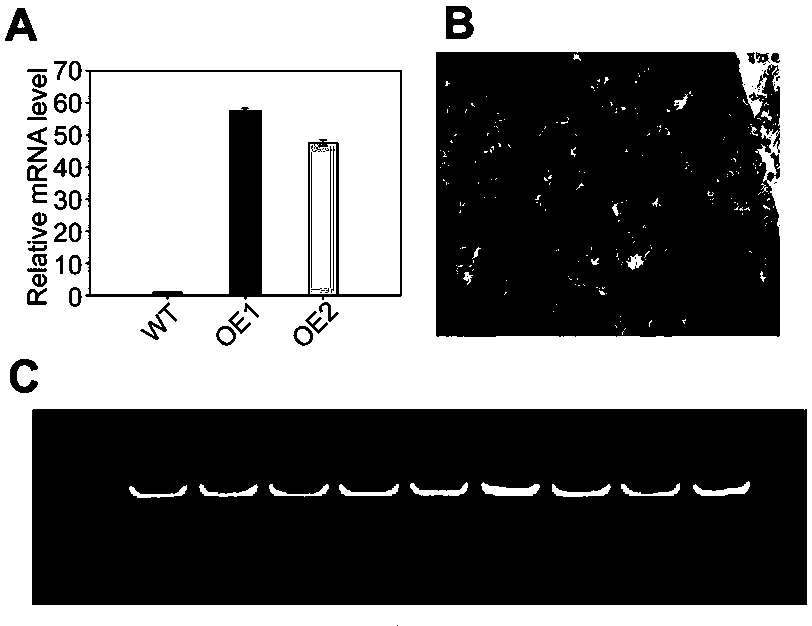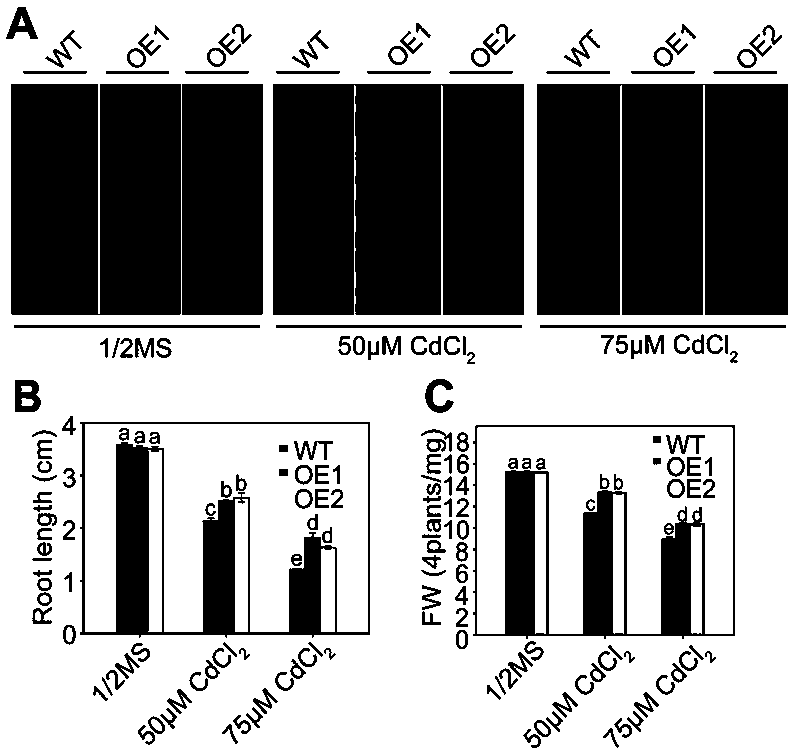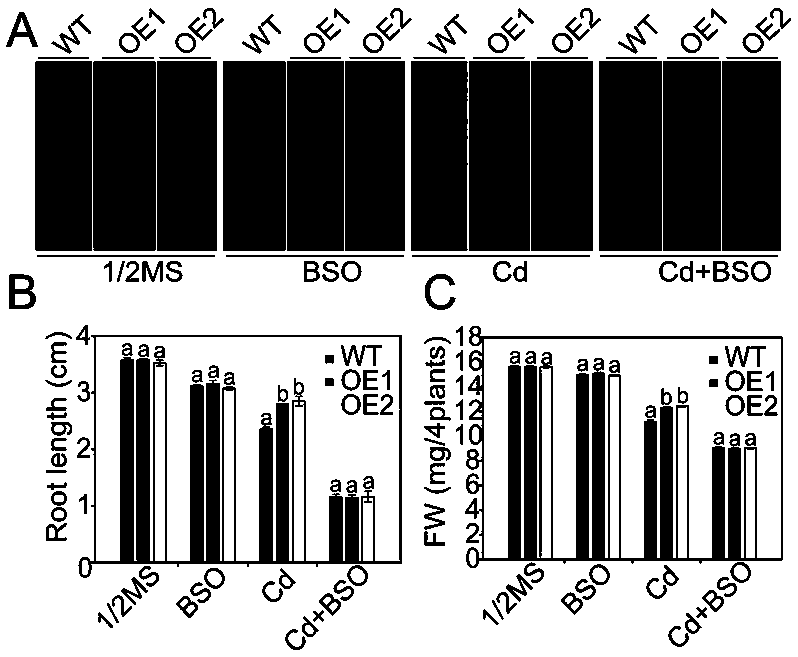Gene for improving cadmium accumulation and tolerance of plant, and application thereof
A plant and tolerance technology, applied in the field of bioengineering, can solve the problems of concealed irreversibility of pollution, pollution of surface water and groundwater, long duration, etc.
- Summary
- Abstract
- Description
- Claims
- Application Information
AI Technical Summary
Problems solved by technology
Method used
Image
Examples
Embodiment Construction
[0023] Below in conjunction with embodiment, the present invention will be further described.
[0024] 1. MYB4 gene overexpression line MYB4-OE1, MYB4-OE2 the acquisition
[0025] In order to verify the function of this gene in the regulation of plant heavy metal cadmium stress, we constructed MYB4 Gene overexpression vector. First, the target fragment is amplified. The wild-type Arabidopsis was normally cultured on ½MS medium for two weeks, the total RNA of the plant was extracted, reverse-transcribed to synthesize cDNA, and the synthesized cDNA was used as a template for PCR to amplify a sufficient amount of the target product. Using the PCR product as a template, a second amplification was performed to introduce restriction sites. The PCR product and vector were digested and recovered. Then, the recovered and purified target DNA fragment and the vector were ligated overnight with T4 DNA ligase. The above ligation solution was transferred into DH5a, and positive cl...
PUM
 Login to View More
Login to View More Abstract
Description
Claims
Application Information
 Login to View More
Login to View More - R&D
- Intellectual Property
- Life Sciences
- Materials
- Tech Scout
- Unparalleled Data Quality
- Higher Quality Content
- 60% Fewer Hallucinations
Browse by: Latest US Patents, China's latest patents, Technical Efficacy Thesaurus, Application Domain, Technology Topic, Popular Technical Reports.
© 2025 PatSnap. All rights reserved.Legal|Privacy policy|Modern Slavery Act Transparency Statement|Sitemap|About US| Contact US: help@patsnap.com



